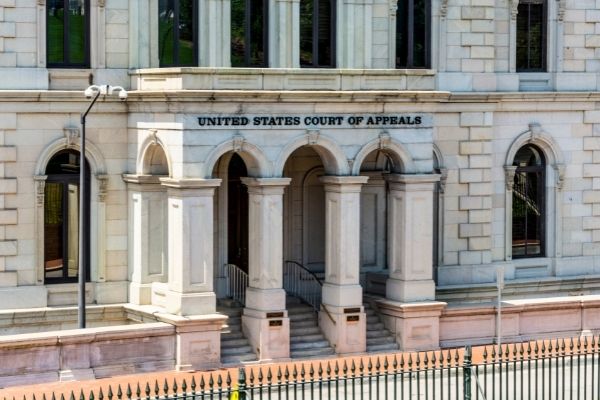Experienced Federal Appeal Attorneys: Competent Representation for Facility Situations
Experienced Federal Appeal Attorneys: Competent Representation for Facility Situations
Blog Article
Demystifying the Refine of Federal Appeals: What You Required to Know
Browsing the complex realm of government charms can commonly feel like passing through undiscovered waters for those not familiar with the procedure. Comprehending the nuances of appellate court territory, the details of filing a notice of appeal, presenting an engaging short, and making an influential oral argument are important components that can dramatically affect the outcome of a case. By unwinding the layers of intricacy surrounding government appeals, individuals can obtain a clearer insight right into the devices that govern this essential phase of the legal system.
Recognizing Federal Appeals Refine
Digging into the elaborate world of the federal charms process unveils a structured and systematic journey with the judicial system - federal mortgate appeals. Federal charms work as a crucial system for examining choices made by lower courts. Understanding this procedure is vital for any person included in legal procedures at the government degree
The process usually begins with a celebration dissatisfied with a reduced court's ruling filing a notification of allure. This causes a testimonial by a greater court, where a panel of judges examines the lawful debates presented by both parties. Briefs laying out the legal thinking behind each celebration's position are submitted, and dental debates might be heard to clarify intricate problems.
The appellate court's choice is based on an extensive exam of the reduced court's proceedings and the arguments offered. The judges do not concentrate but reexamine facts on whether legal mistakes took place that affected the lower court's choice. As soon as the appellate court gets to a choice, it can verify, reverse, remand, or modify the reduced court's judgment, offering quality and finality to the legal conflict. Understanding this procedure is important for browsing the intricacies of federal charms effectively.
Appellate Court Jurisdiction Clarified

Appellate courts have territory over details kinds of instances, generally those entailing lawful errors, procedural issues, or questions of legislation as opposed to valid conflicts. The territory of appellate courts is generally described in laws and regulations that regulate the court system. Comprehending appellate court territory is critical for celebrations included in the allures procedure as it determines whether a case is eligible for testimonial and the extent to which the appellate court can interfere in the lower court's choice.
Declaring a Notification of Appeal
The initial action in beginning the federal appeals process involves submitting a Notification of Allure with the ideal appellate court. federal appeal lawyer oklahoma. This crucial paper formally notifies the court and the other events associated with the instance that the appealing event means to seek a testimonial of the reduced court's decision. Submitting a Notice of Appeal is a stringent step-by-step demand that establishes the appellate procedure in movement
When preparing the Notice of Allure, it is necessary to make sure compliance with the particular policies and guidelines of the appropriate appellate court. The paper must commonly include details such as the instance name, the reduced court's name, the day of the judgment being appealed, and a succinct declaration showing the grounds for the charm.
When filing a Notice of Allure,Timeliness is of the significance. Missing out on the deadline for submitting this paper can result in the charm being disregarded, emphasizing the significance of exact and punctual initiation of the allures procedure. It is recommended to seek lawful advice to navigate the complexities of submitting a Notice of Appeal properly.
Briefing and Dental Disagreement
In the appellate process, presenting written briefs and participating in oral debates play content pivotal duties in advocating for the appealing party's setting before the appellate court. Briefs are comprehensive lawful papers that describe the events' arguments, legal authorities, and analysis sustaining their positions. These written submissions provide the court with a comprehensive understanding of the truths of the situation, the relevant law, and why the appealing celebration believes the reduced court's choice ought to be reversed.
Adhering to the entry and review of the briefs, dental arguments supply the parties a chance to further clarify their placements, resolve any questions the appellate judges may have, and emphasize crucial factors from their composed briefs. Oral debates are a chance for the attorneys to convince the courts via verbal advocacy and reactions to inquiries from the bench.

Obtaining the Appellate Court Decision

Final Thought
To conclude, the government charms procedure is a complicated but essential action in seeking justice. Comprehending the appellate court jurisdiction, submitting a notice of allure, preparing briefs, and presenting oral disagreements are all essential components of this procedure. Inevitably, getting the appellate court choice can supply quality and resolution to legal disagreements. It is essential to browse the federal appeals process with persistance and interest to information to attain a reasonable result.
As we advance from comprehending the government charms process to studying the complexities of appellate court jurisdiction, an essential aspect comes to light pertaining to the authority and restrictions of these greater courts in the legal landscape. Appellate court territory refers to the scope of situations that a particular appellate court has the power to make a decision and evaluate upon. Unlike test courts that listen to cases for the very first time, appellate courts are restricted to reviewing choices made by reduced courts. Recognizing appellate court jurisdiction is essential for celebrations involved in the charms procedure as it determines whether a case is eligible for review and the degree to which the appellate court can intervene in the lower court's decision.
Whether the appellate court verifies, reverses, or remands the lower court's decision, understanding the effects of the judgment is important for all events entailed in the appellate procedure.
Report this page